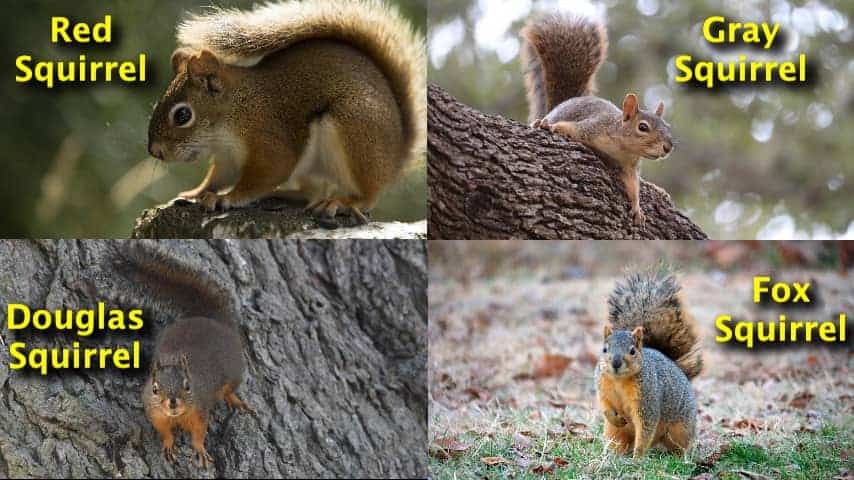When Do Squirrels Mate?
Squirrels are fascinating creatures that play an important role in many ecosystems. Their mating habits and breeding cycles are a fascinating aspect of their biology. In this comprehensive article, we will explore when squirrels mate, their breeding seasons, gestation periods, and other key details about their reproductive behaviors.
Squirrel Mating Seasons
Squirrels typically have two mating seasons per year, with slight variations depending on the species and geographic location. The primary mating seasons are:
- Late Winter/Early Spring: This mating season usually occurs between December and February in the Northern Hemisphere.
- Late Spring/Early Summer: The second mating season takes place between May and July.
Factors Influencing Mating Seasons
Several factors influence the timing of squirrel mating seasons, including:
- Photoperiod (Day Length): The changes in day length throughout the year serve as a cue for squirrels to begin their mating cycles.
- Food Availability: Squirrels tend to mate when food sources are plentiful, ensuring an adequate supply of resources for their offspring.
- Temperature: Mild temperatures in the spring and fall are ideal for squirrel mating and reproduction.
- Species-Specific Adaptations: Different squirrel species may have evolved to mate at slightly different times to avoid competition for resources or to take advantage of unique environmental conditions.
Courtship and Mating Behavior
Squirrels have a unique courtship and mating process that involves several key behaviors:
- Scent Marking: Male squirrels use scent marking to attract females and establish their territories. They rub their cheeks and urinate on branches and tree trunks to leave their scent.
- Chasing: During the mating season, males will chase females through the trees and on the ground. These chases can be fast and frantic, with multiple males pursuing a single female.
- Vocalizations: Squirrels make a variety of vocalizations during the mating season, including chattering, barking, and a soft, buzzing sound that mimics the sound of nursing babies.
- Mounting and Copulation: Once a female is receptive, the male will mount her from behind and copulate. The mating process is relatively brief, lasting only a minute or two.
Gestation and Birth
After mating, female squirrels have a gestation period of approximately 38-46 days, depending on the species. The young are born blind, deaf, and naked, and are completely dependent on their mother for survival.The average litter size is 3-4 young, but can range from 1 to 9 depending on the species and environmental conditions. Females may give birth to two litters per year, with the first litter born in late winter or early spring and the second litter born in late spring or early summer.
Parental Care and Weaning
Squirrel mothers provide extensive care for their young. They build a nest, called a drey, where the babies are born and raised. The mother nurses her young for several weeks and provides them with warmth and protection.At around 7-8 weeks of age, the young squirrels begin to venture out of the nest and start eating solid food. They are fully weaned by 10-12 weeks old and will remain with their mother for a few more weeks before dispersing and establishing their own territories.
Squirrel Species and Mating Habits
There are several species of squirrels, each with their own unique mating habits and breeding cycles. Here are a few examples:
- Eastern Gray Squirrel: The most common species in North America, gray squirrels typically mate in late winter and late spring.
- Fox Squirrel: Found in the central and eastern United States, fox squirrels mate in late winter and late spring, like gray squirrels.
- Red Squirrel: Also known as the Eurasian red squirrel, this species is found in Europe and Asia. They have a single mating season in late winter.
- Flying Squirrel: There are several species of flying squirrels, all of which mate in late winter and late spring.
Frequently Asked Questions (FAQ)
1. How many times a year do squirrels mate?
Squirrels typically have two mating seasons per year, with slight variations depending on the species and geographic location.
2. What time of year do squirrels mate?
The primary mating seasons for most squirrel species are late winter/early spring (December-February) and late spring/early summer (May-July).
3. How long is a squirrel’s gestation period?
The gestation period for squirrels is approximately 38-46 days, depending on the species.
4. How many babies do squirrels have at a time?
The average litter size for squirrels is 3-4 young, but can range from 1 to 9 depending on the species and environmental conditions.
5. How long do baby squirrels stay with their mother?
Young squirrels remain with their mother for several weeks after being born, typically until they are fully weaned at 10-12 weeks old.
Additional Information
| Fact | Source |
|---|---|
| Squirrels are found on every continent except Antarctica. | Wikipedia – Squirrel |
Conclusion
Squirrel mating and breeding habits are fascinating to observe and study. By understanding when squirrels mate, their courtship behaviors, and the care they provide for their young, we can better appreciate these remarkable creatures and their role in the ecosystem. Whether you’re a wildlife enthusiast, a gardener dealing with squirrel damage, or simply someone who enjoys watching these agile acrobats in the trees, knowing about squirrel mating habits can provide valuable insights into their lives and behaviors.



